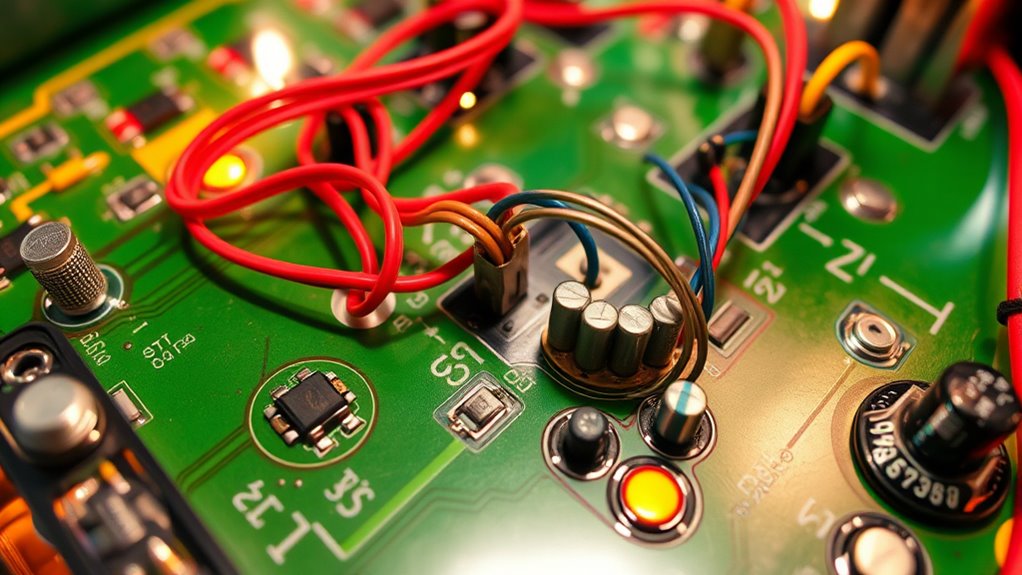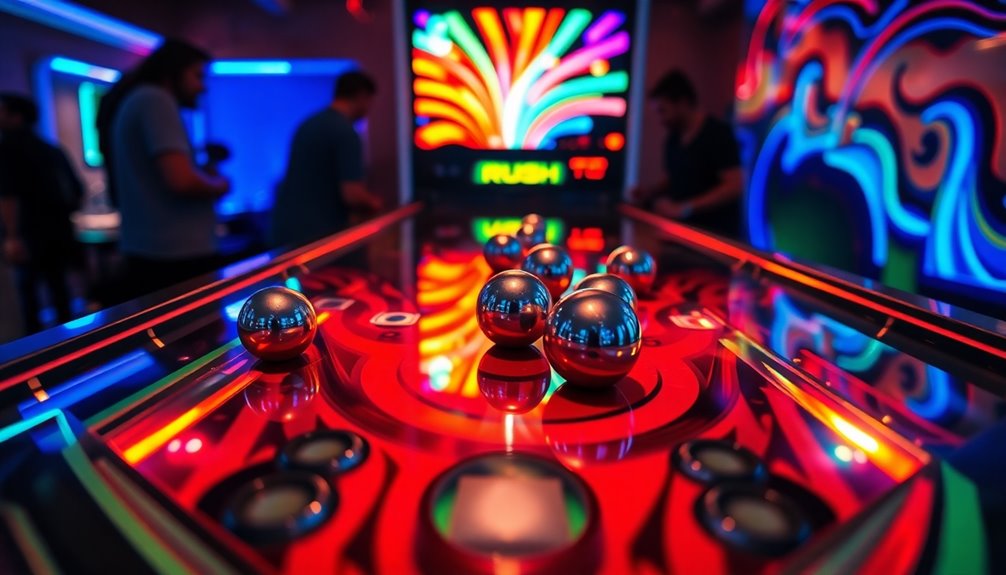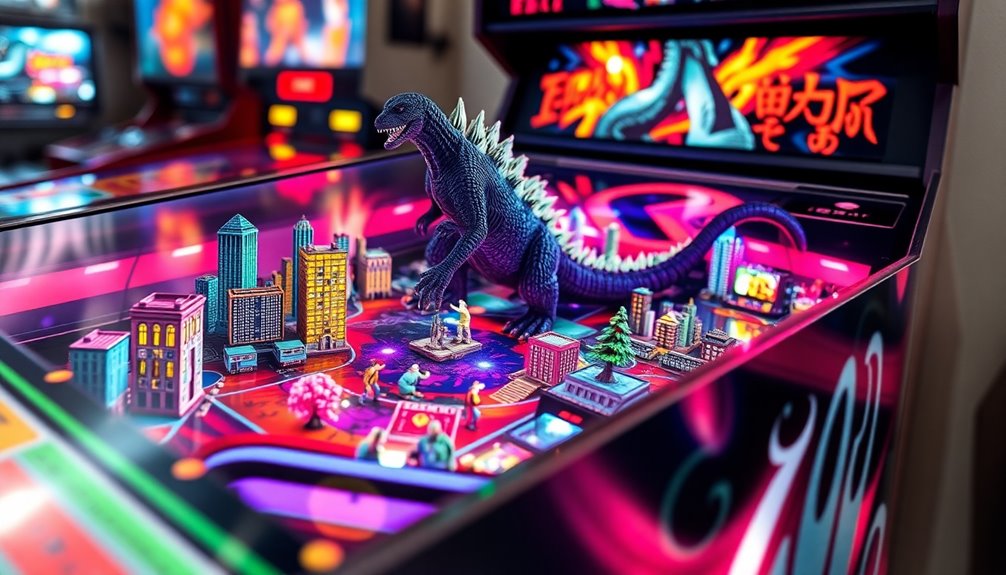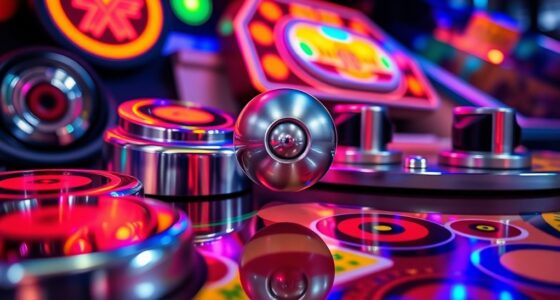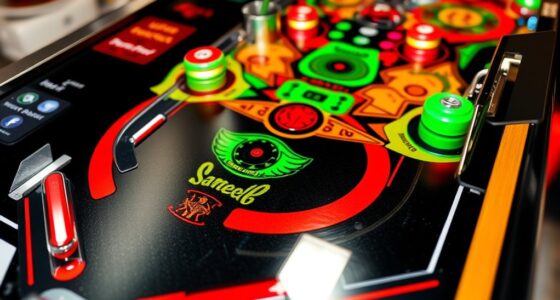To maintain your pinball electronics, regularly inspect and test boards, coils, and switches for issues. Check wiring connections for corrosion or looseness, and clean switch contacts to ensure proper contact. Test coils with a multimeter and replace any that show signs of damage or overheating. Confirm diodes are intact and replace faulty components promptly. Keeping up with this routine helps prevent major failures and keeps your machine running smoothly—continue to explore these tips for expert guidance.
Key Takeaways
- Regularly inspect and clean switch contacts and wiring to ensure reliable connections and prevent malfunctions.
- Test coils with a multimeter for continuity and replace any that show broken readings or signs of failure.
- Confirm proper diode placement across coils to prevent back EMF damage and ensure correct coil operation.
- Re-seat connectors and verify wiring connections to restore proper activation of coils and switches.
- Use energy-efficient, compatible LED replacements to reduce heat, improve visibility, and prevent overheating issues.
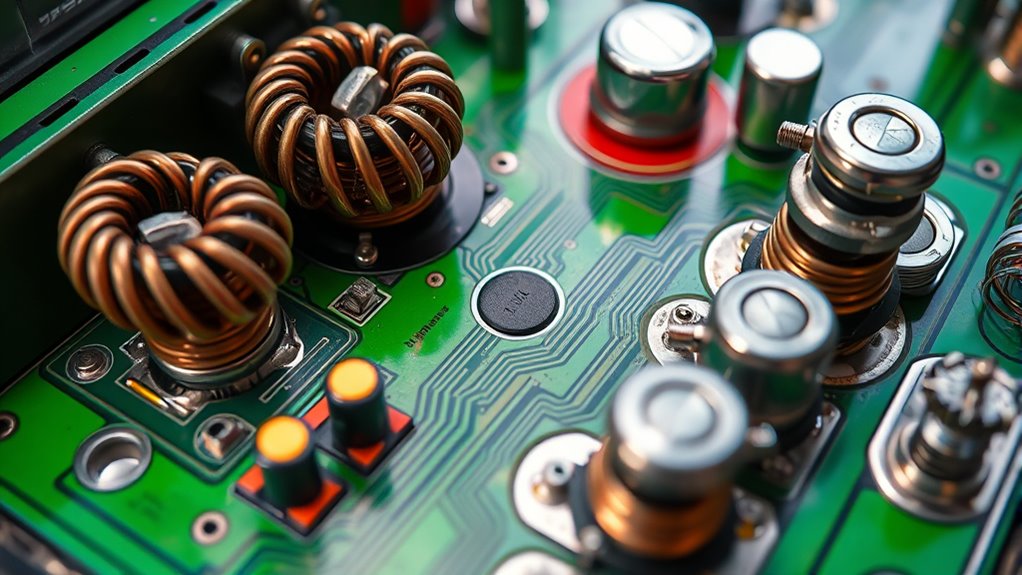
Are you wondering how to keep your pinball machine’s electronics running smoothly? One of the best ways is to stay proactive with LED replacement and coil troubleshooting. Modern LED bulbs are energy-efficient, last longer, and generate less heat than traditional incandescent bulbs, making them a smart upgrade. When replacing LEDs, ensure you pick the correct size and type for your specific machine. Swapping out old bulbs for LEDs not only enhances the visual appeal but also reduces power consumption and prevents overheating issues that can damage sensitive components.
Coil troubleshooting is another essential aspect of maintaining your pinball’s electronics. Coils are responsible for many mechanical actions, like flippers, pop bumpers, and kickers, so any malfunction can seriously impact gameplay. If a coil isn’t activating properly, start by checking its wiring for loose connections or corrosion. Sometimes, a simple re-seat of connectors can restore function. Next, test the coil with a multimeter to check for continuity; a broken coil will often show no readings. If the coil is faulty, replacing it with an identical model is usually straightforward, but always verify specifications beforehand. Keep in mind that a coil drawing excessive current or overheating might indicate a short or other internal issue, which requires further diagnosis. Additionally, understanding IRA tax implications can help you plan your retirement savings more effectively and avoid unexpected tax liabilities.
To prevent coil problems, regularly inspect the associated switches and their wiring. Dirty or misaligned switches can cause false signals or prevent coils from firing correctly. Clean them with contact cleaner, ensuring they operate smoothly and make proper contact. Also, verify that the coil’s diode is in good shape, as a bad diode can cause back EMF that damages the coil or other electronics. When troubleshooting, always disconnect power before working on coils or boards to avoid short circuits or shocks. If a coil is repeatedly failing, consider testing the driver board controlling it, as a faulty transistor or integrated circuit could be the root cause.
Frequently Asked Questions
How Often Should Pinball Electronics Be Inspected?
You should inspect your pinball electronics at least every 6 to 12 months, depending on usage. Use electronic diagnostic tools to identify potential issues early. Follow a preventative maintenance schedule to check boards, coils, and switches regularly. This proactive approach helps prevent breakdowns and ensures smooth gameplay. If your machine sees heavy use, consider inspecting more frequently, like every 3 to 6 months, to keep everything running flawlessly.
What Are Common Signs of Electronic Component Failure?
You might notice component corrosion or flickering lights, which signal failure. Power supply issues often cause these problems, leading to inconsistent gameplay. Look for burnt or swollen parts, unusual noises, or unresponsive switches. Don’t ignore corrosion on circuit boards, as it can cause shorts. Regular inspections catch these signs early, preventing costly repairs. If you see these signs, act quickly to avoid further damage and keep your pinball machine running smoothly.
Can I Replace Coils and Switches Myself?
Yes, you can replace coils and troubleshoot switches yourself if you’re comfortable with electronics. Start with coil replacement by disconnecting power, removing the faulty coil, and installing a new one, ensuring proper connections. For switch troubleshooting, test continuity with a multimeter and clean or adjust the switch contacts if needed. Taking your time and following safety precautions will help you successfully maintain your pinball machine’s coils and switches.
What Tools Are Essential for Maintaining Pinball Electronics?
Think of maintaining your pinball electronics like tuning a fine instrument. You’ll need essential tools like diagnostic tools to identify issues quickly, along with repair kits for coils, switches, and boards. A multimeter helps test circuits, while screwdrivers and pliers assist in making precise adjustments. Having these tools on hand guarantees you can troubleshoot and repair efficiently, keeping your machine playing smoothly and avoiding the frustration of unexpected breakdowns.
How Do I Troubleshoot Intermittent Electronic Issues?
To troubleshoot intermittent electronic issues, start with circuit diagnostics to identify faulty connections or components. Use a multimeter to check for voltage drops and continuity. Next, update firmware on your pinball boards to fix bugs that might cause glitches. If problems persist, reseat or replace suspect boards, coils, or switches. Regular diagnostics and firmware updates help maintain reliable gameplay and prevent future issues.
Conclusion
Keeping your pinball electronics in top shape might seem like a formidable puzzle, but with careful attention, it becomes a rewarding challenge. Just as a well-tuned game offers endless fun, your dedication guarantees smooth gameplay and longevity. Remember, neglecting coils or switches can turn a lively game into a frustrating malfunction. So, embrace the balance—patience and precision—and enjoy the thrill of a perfectly maintained pinball machine, where every bounce and switch is a tribute to your care.
